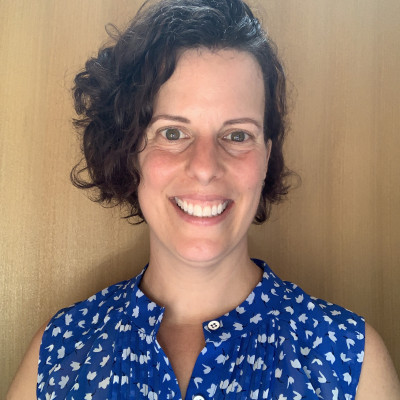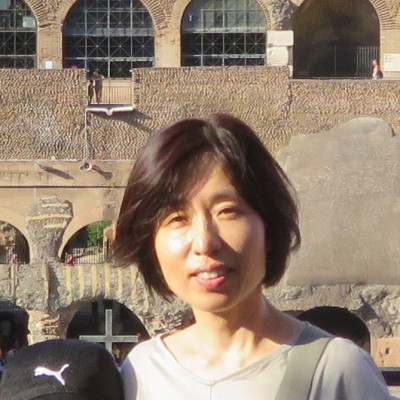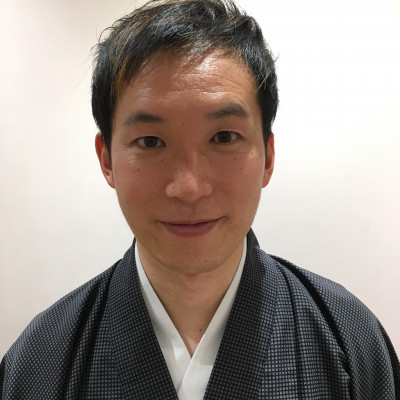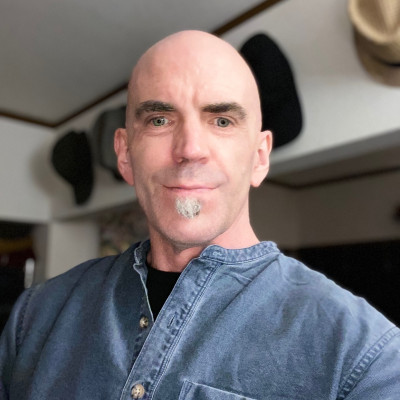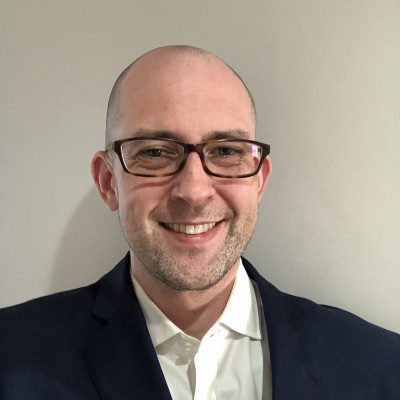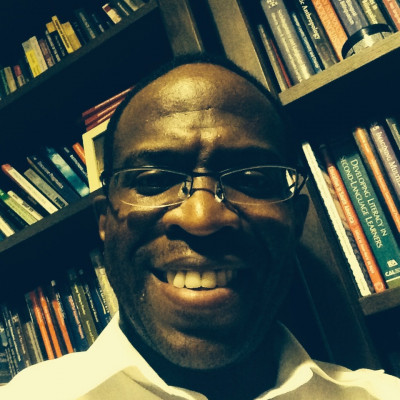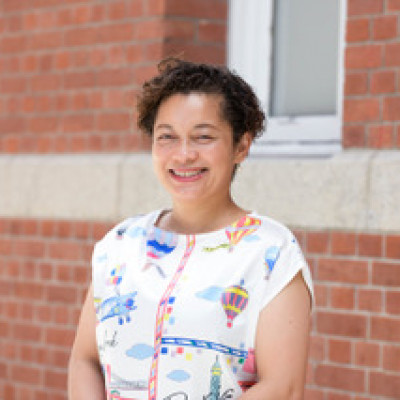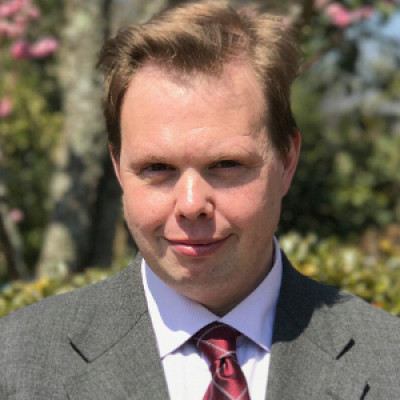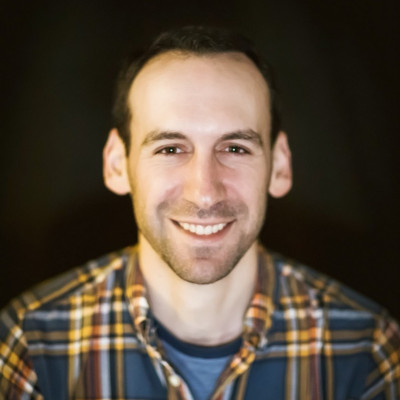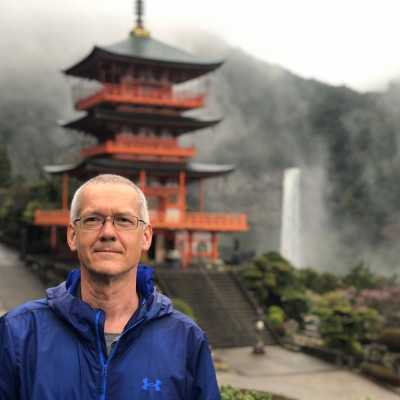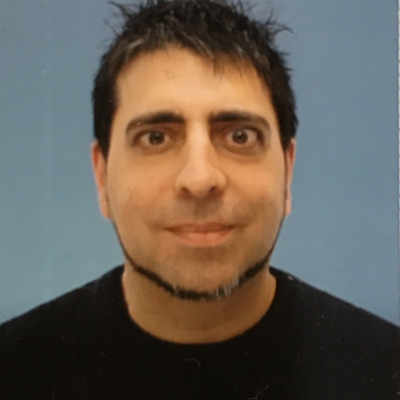Sessions / Location Name: Room R
Virtual Location
Virtual: You cannot enter virtually via this page. Click on the titles of individual presentations or go to the Live Page
Opening + Welcome #3157
Welcome and Finding Home in Happy (Yoshi Grote)
Introduction to TELL and its services (Jack Shaw)
"Home" (Spoken word, Phil Norton)
ELT in Japan and the New Black Diaspora: (Re)imagining Work, Home, and Belonging #3124
This presentation highlights the experiences of a community of Continental African, Afro-Caribbean, and Afro-Western English teachers currently working and residing in Japan. I explore their shared professional and pedagogical experiences in a variety of contexts nationwide, as they conceptualize their roles as language teachers and renegotiate what the notion of "home" means to them as members of a transnational diaspora. Learning about the collective experience of these individuals has significant implications for the promotion of multiculturalism and diversity through ELT in Japan, a point that I explore in more depth.
Identity and Power #3125
母は韓国から20歳の時に日本へ来ました。父は在日2世です。彼女は韓国で高校までの教育は受けてきました。しかし、当時の教育に人権理解、社会との繋がり、個人の幸せなどが入る余地はなかったのでしょう。もしあったとしてもそれは数限られた、安定し、高いレベルの教育を受けた者たちの特権だったのではないでしょうか。彼女が全く異なる文化・社会・言語を持つ日本に来て、どのように彼女自身を自覚していったのでしょうか。その時に助け、導いてくれる人は一人でもいたのでしょうか。傷はどんどん広がり、深まり、人格を変え、そしてその思いは娘3人たちへと引き継がれます。彼女は豊かな言語表現を通してではなく眼差しで、行動で、表情で、そして数少ない語彙を使ってどうにかしてコトバにしようとしたり、伝えることを諦めたりしながら時が過ぎていったのです。3人の娘は小さい頃は無意識に、しかし歳を重ねるにつれじわじわと悩み、考えるのです。 私は認識し始めました。知ること、学ぶこと、話すこと、経験すること、それらを使って何かが手遅れにならないように努力する意味があるのではないかと。〜押し寄せる様々な力が個人に圧力をかけます。しかしその力を吸収し異なる力に変えていくことができるかもしれない。〜
My mother came to Japan from Korea when she was 20 years old. My father is a second generation zainichi. She received her education up to high school in Korea. However, there was no room for understanding of human rights, connection with society, and individual happiness in the education at that time. If there was, it was the privilege of a limited number of people with a stable and high level of education. How did she come to Japan, a completely different culture, society, and language, and how did she come to realize who she was? Was there even one person who could help and guide her at that time? The wounds spread, deepened, and changed her personality, and her feelings were passed on to her three daughters. The three daughters are slowly and unknowingly troubled and thinking, not through the richness of language, but through their eyes, actions, facial expressions, and the few words they have in their vocabulary. As the years went by, I began to recognize that, in the end, it is the children who are the most important. Isn't there a point in striving to know, to learn, to speak, to experience, so that it is not too late to use them? Isn't there something we can do to make each person feel happy? We can absorb the various forces that come at us and sometimes run away from them. Isn't identity to speak in a person's own words about what makes them happy?
Saturday Lunch + Open Stage #3126
Want to share a song, contribute a poem, just listen to others? Wind down and have your lunch with us. Creative output is welcome.
Stage coordinated by Phil Norton.
私自身が選んだ道・見つけた心の家 The Path I Chose and the Home I Found by Karimova Zarina #3133
私は、名古屋在住のウズベキスタン人です。2010年に来日し、私の人生は変わりました。来日すぐに経験した驚き、その後、日本社会で経験した数々の差別、孤独、温かい人たちとの出会い。異文化の中で、アイデンティティに悩み、差別や孤独に苦しみながら、見つけた自分の道、自分にとって安心できるホームとはについて話をします。私の人生のこれまでを皆さんと共有したいと考えています。
DeepL→ I am an Uzbek living in Nagoya, Japan. The surprise I experienced immediately after coming to Japan, the discrimination, loneliness, and warm people I met in Japanese society. I will talk about the path I found in a different culture, struggling with identity, discrimination and loneliness, and what is a safe home for me. I hope to share with you all what I have learned so far in my life!
How My Younger Sister Brought Me Into the World of Neurodiversity #3136
Having a sibling close to you in age means you spend most of your early lives together. In this interactive presentation, I will talk about my life as a Japanese undergrad student and my relationship with my younger sister who has Down Syndrome, specifically the precious opportunities and valuable experiences she has brought to me. Our relationship has changed over time, and not only does she bring a lot of joy to my life, but she has also given me new perspectives on working with people with neurodiversity, which is still a relatively new concept in Japan. I will also share my related experience of teaching dancing to a class of neurologically diverse students for about 6 years and discuss the importance of having such a safe and comfortable space, both for students and myself. Videos and photos of the dance classes will be used to demonstrate and compare the differences between typical dance classes and classes for neurologically diverse students. Tips on teaching such classes will be shared, as well as the history and logistics of setting up such a class for anyone interested in setting up similar classes in the future. The session will also include rounds of audience discussion and sharing as well as a short Q&A segment.
Finding Home in Academia in (or from) Japan 日本の(あるいは日本から)学界で家を見つける #3135
After about eight years in Japan I am still on the way to find home within Japanese academia. I want to take this opportunity to address the problem of finding acceptance within academia in (or from) Japan, by reflecting on my/our experiences within universities, scholarly associations, and study groups.
In this interactive session I would like to discuss issues such as: • the complexities of teaching something outside our specialization field (for example, teaching language while pursuing research on a different field) • the language and cultural barrier to feel integrated in Japanese universities and scholarly associations • the sense of ‘bubble’ and estrangement from Japan when communicating mainly with foreign faculty or belonging mainly to foreign academic associations • the struggle of whether to present or hide our ‘differences’ within academia (race, gender, sexual orientation neurodiversity, multiculturality, plurilingualism, etc.) • how to confront the barriers and challenges we encounter in Japan in general and Japanese academia in particular • how to manage or compensate for the solitude, frustration, or sadness of not finding home
I will also briefly introduce the anthropological concept of ‘cocoon community’, which I think might be helpful to explain why in some academic associations we feel estranged and in others we can feel at home, and the significance of non-academic communities.
Mediating Between Cultures: Intercultural Parents Raising their Children Transculturally in Japan #3134
The impact of increased ethnic diversity in Japan has attracted considerable attention in the field of multicultural studies in Japan, with rapidly changing demographics, social structures and ideologies as a result of the growth of immigration in the country and worldwide. Immigration and its outcomes have also initiated a new trend towards an increase in intercultural marriages in Japan. In particular, the increase in the number of families with multicultural backgrounds in Japan has been the focus of much research in recent years. Raising children transculturally, which adds several new dimensions to the dynamics of parenting, can be challenging for multicultural families. Consequently, the intercultural parenting experience is emerging as an important issue in Japanese society. What are today's trends and challenges of intercultural parents raising their children in two or more cultures in Japan? Other than cultural background, do systemic and contextual factors also impact the way parents raise their children? The first half of this presentation, will be focused on reporting findings from a small-scale qualitative study of the experiences of three intercultural couples raising their children transculturally in Japan. The second half of this presentation will be interactive with participation from the audience to discuss the common benefits and opportunities of transcultural parenting as a source of strength rather than a weakness.
Japanese-International Blended Families and the Impact at Home and School #3147
Since the 1960s, the percentage of blended families, also known as stepfamilies or blendfamilies in Japan, has steadily increased from about 11% of the population to 26% (Gender Equality Bureau, Cabinet Office, 2021). Previous research on blended families has centered on mental health, cultural views, values of grandparenting, mothering, and fathering and family policies and law (Sugimoto & Yokoyama, 2017; Nozawa, 2020). However, there is limited English research about the effects of international-Japanese blended families and education. This presentation adopts Nielsen’s (1993) model to study these effects on students in the Osaka region. It focuses on three questions: 1. What factors affect grades and behavior after a separation? 2. How are students’ attitudes toward separation and family members assessed? 3. What ways can schools facilitate students’ adjustment and academic performance after their parents separate or re-marry/re-partner? Surveys were created and sent to children in international-Japanese blended families. This data will be analyzed using Conventional Content Analysis (Krippendorff, 1989; Hsieh & Shannon, 2005). Preliminary findings will be presented at Living On The Edge 2022: Finding Home. It is also hoped that discussions will contribute to the development of this research.
Addressing Conflict and Living on the Edge: Plurilingualism, Multiperspectivity, and the Cold War in a University EFL Class 大学EFL授業にコンフリクトを取り上げる意義:冷戦史を通して育てる複言語主義、複眼的思考 #3148
The war in Ukraine has reawakened Cold War fears and made 20th-century history relevant to students who have grown up in an age of peace. Considering these circumstances, this presentation introduces a course entitled English Expression through Song, taught by the author, centered on music of the cold-war era. The course aimed to foster analytic ability of English song and metaphor, contextualized within cultures and histories, and to promote multiperspectivity (Kropman, van Boxtel & Van Drie, 2020) and decentering (Candelier et al., 2012). The course emerged from the author’s attempts to reconcile his bi/plurilingualism with expectations to act as a ‘native-speaker’ in an English-only capacity (Pearce, 2021). The presentation explores how the author ‘found his home’ in the classroom employing his plurilingualism and background in Cold War foreign diplomacy. Additionally, qualitative analysis of student reflections and post-course interviews will illuminate shifts in learners’ developing understanding of language, culture, history, and conflict, as well as shifts in their identity as language users. The conclusion touches upon how addressing historical conflict in the course may have helped the students begin to localize their 21st-century identities as part of a complex, conflict-fraught world in which their future trajectories are increasingly unclear, and peace is no longer certain.
Language Acquisition as Identity Formation: What it Means for Pedagogy #3149
Language acquisition is a complex process. While there have been many constructs designed to explain the process, one promising one is identity formation. This posits that language is formed alongside a new identity. The presenter will explain the concept of multiple identities, and how it fits into this theory. Furthermore, the presenter will explain what exactly this looks like in the language classroom. This discussion will be supported by literature from feminist, ethnic minority, and LGBTIQ perspectives. The presenter will follow-up with a discussion of why identity should be given greater weight in the language classroom. Specifically, the presenter will discuss why inclusive materials that promote critical thinking. Inclusivity must be seen from a dual perspective. First, inclusivity is important so that students find their home in the materials. Second, inclusivity is important so students can see their imagined community in the materials, finding a new home. Finally, the presenter will offer three pedagogical tools designed to exploit this process: narrative engagement, extended roleplay, and collaborative story writing. If there is time, the audience will have the opportunity to engage with these approaches before a discussion of what it means for their practice.
Where am I from?: Searching for my Cultural Identity #3150
“Where are you from?” It seems like such an innocent question, but even now I still feel conflicted when asked, and when trying to answer. Where am I from? I am the daughter of two-time immigrants, and I am an immigrant in my own right as well. I have lived in the country of my parents’ birth, the country of my ancestors. I have lived in the country of my birth, the first country my parents emigrated to, and the country I married into. I have lived in the country where my parents finally settled, and where I mostly grew up. I identify with each of these countries. Lastly, I am an immigrant to yet another country.
So, where am I from? Where do I fit in? Who am I? What is my cultural identity? These are all questions that are difficult to answer.
In this interactive presentation, using the example of my and my family’s stories of immigration, I will explore some of the complexities of cultural identity that emerge in the face of the superficially simple question “Where are you from?”
Leaving the NEST: Reflections as an American Teacher of Japanese in an Australian High School #3151
In recent years, there has been growing recognition of nuance in the dichotomy between NESTs (native English speaking teachers) and NNESTs (non-native English speaking teachers). However, even as the complex definition of a native speaker is explored and scrutinized, it can still be difficult for those who identify unambiguously as a NEST or NNEST to understand the challenges and strengths of the other side. The presenter, a NEST from the US, had a chance to bridge this gap when he was offered the opportunity to teach Japanese language classes in an Australian high school. Over a two week period, he taught beginner level classes to three groups of thirty 7th graders and one group of twelve 8th graders. In this interactive presentation, he describes how the experience of teaching a foreign language in a foreign country broadened his understanding of home. He shares the details of lesson planning and delivery, highlighting moments affected by his status as a non-native Japanese speaker. He then explains how this influenced his English teaching practice and helped him to better understand and embrace differences with NNESTs in Japan. Finally, participants are invited to reflect on where their own home bases lie and to critically examine implicit biases they or their colleagues might hold from their own experiences with native speakerhood.
Telling Stories and Making Space #3152
I confess. Minutes after becoming an American citizen I told a lie. On examining my “why,” I have come to realize that living in the liminal space of dual citizenship opens up spaces for learning about how to negotiate identity through geography and storytelling. Liminal spaces can be the in-between spaces not fully defined; not fully one or the other. Yet it is. Argentine scholar Walter Mignolo (2011) contend that we must tell our stories from those places in which we dwell. Hence as a Caribbean person, having lived on 3 continents and several islands, I invoke Afrikan-Caribbean vernacular practices to make home abroad. Storytelling plays a major for passing down knowledge, to teach, and make theories. Everybody and every body has stories, and different ones. Difference can be explored as and through stories at any level. Thus, in this presentation, I will share stories of how I make space for belonging for myself, and students through storytelling. My approach is interdisciplinary, drawing on ethnography, anthropology, literature, and cultural studies. I will invite the audience to consider how stories from the edge can be used to intervene in civil and academic conversations to bring visibility and voice to difference.
A Passion for Japan: The Long Journey to Calling Japan Home #3153
For foreign residents of Japan, when and why do we make the transition from just saying we live in Japan to calling this country “home”? According to Lysgaard’s model (Lysgaard, 1955), expatriates go through four stages of culture shock: honeymoon, frustration, adjustment, and acceptance. It would be an oversimplification, however, to assign specific time frames to each stage or assume that everyone advances to the acceptance stage. Progression through these stages has numerous variables, including language proficiency, home country (e.g., low context or high context culture), and, perhaps most importantly, finding an ikigai in the new country.
Ikigai (生き甲斐) is roughly translated as “a reason for being,” or more simply, “why we get up in the morning.” In this panel discussion, the presenters will share how a passion for a particular aspect of Japanese culture helped them not only to reach the acceptance stage, but also to feel accepted by their hosts. These respective passions include how:
● rooting for the local baseball team led to being involved with the Japanese sports media ● a fascination with Japanese matsuri (festivals) led to being granted behind-the-scenes access to one of Japan’s biggest festivals ● an interest in Japanese literature led to documenting discrimination against Hansen’s disease patients in Japan
Individual presentations will be followed by an open discussion on finding your ikigai and making Japan (or any foreign country) feel like home.
Closing #3146
It’s not goodbye, it’s see you next year… Join us for some closing comments, smiles, and to listen to Phil Norton sing us out with his original song, "Will you be my Home".

